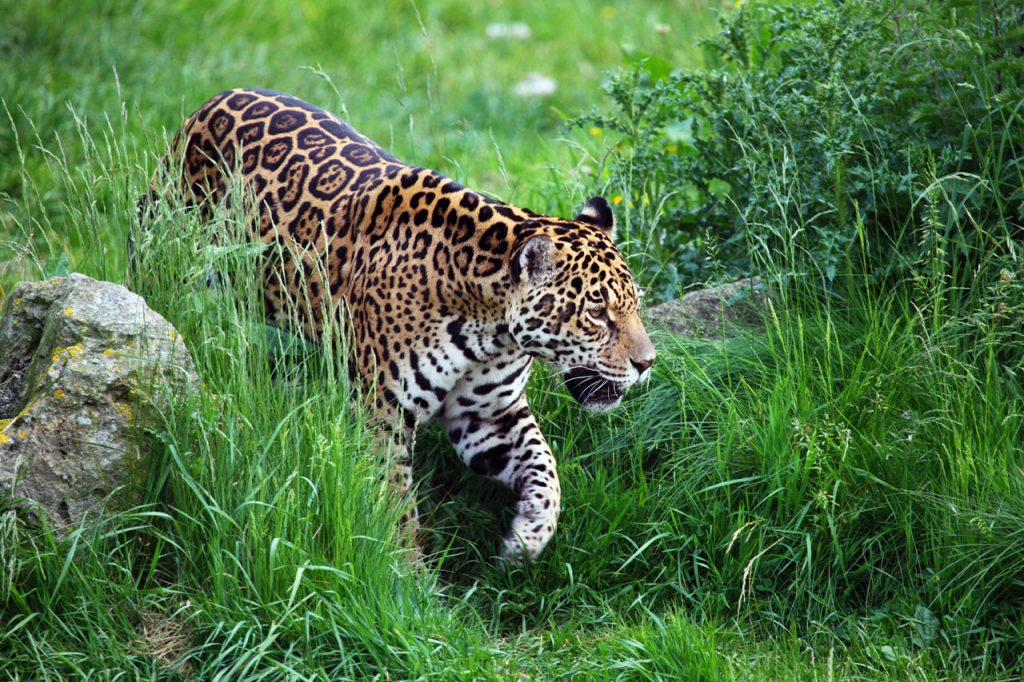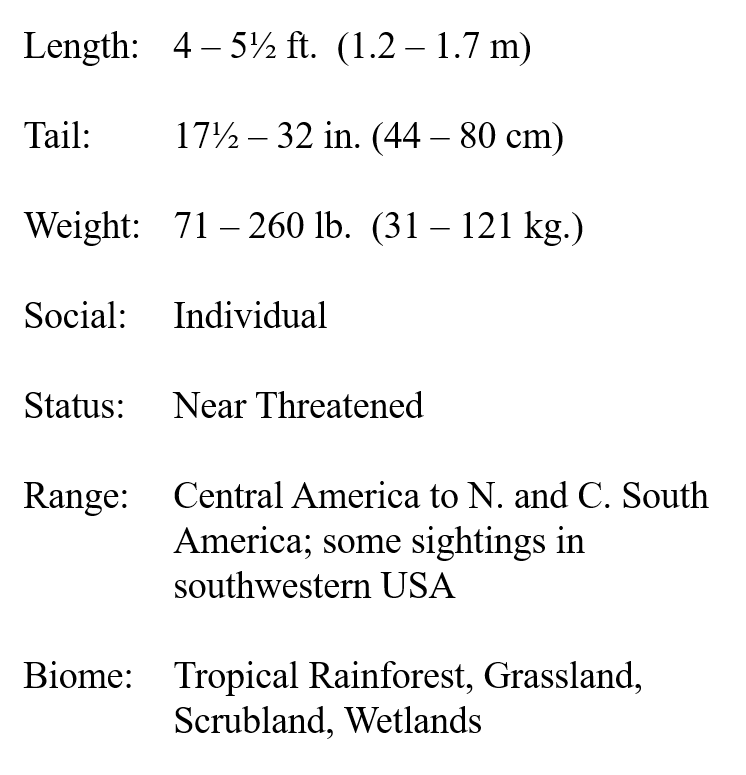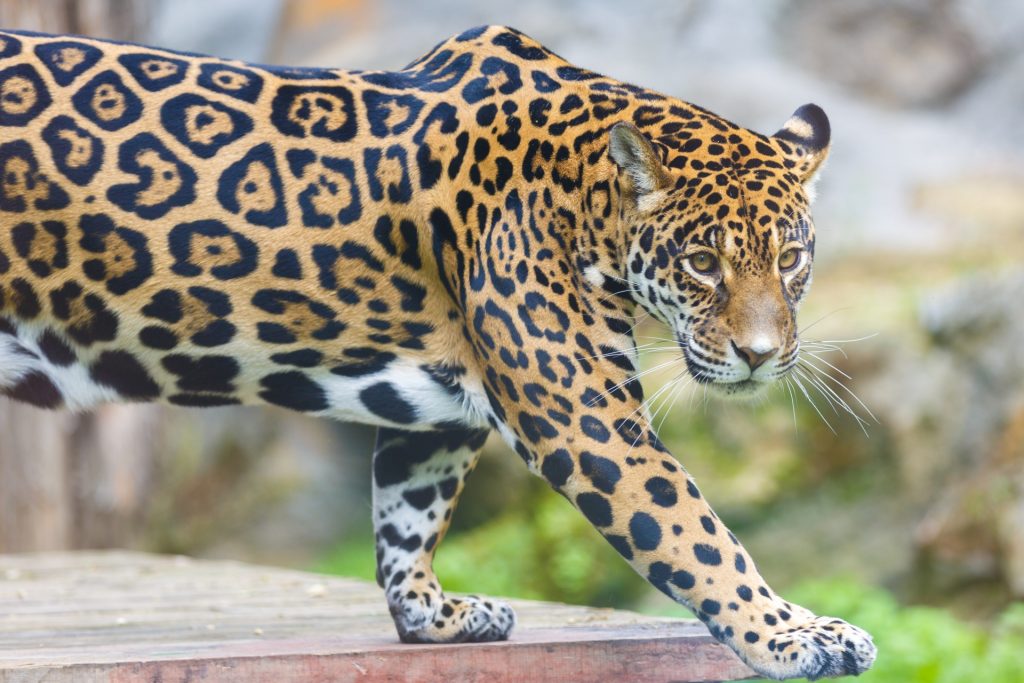Panthera onca


North and South America’s only true big cat, the Jaguar is often the victim of misnomer by many as a leopard. However, the Jaguar is typically smaller, but often heavier than its African and Asian distant relatives. Part of the confusion lays with its “spots” known as rosettes that cover the animal’s body.

In the comparison image above, you can see the difference between the “spots” of that of a Leopard (left) and that of a Jaguar (right). At first glance they are similar, however, the rosettes of a Jaguar tend to be more bold and always maintain a small black “dot” in their rosettes while the leopard lacks these features.
In comparison, of physique, the Jaguar tends to be more muscular and is equipped with a very muscular head and hindquarters. These features have helped the Jaguar fill the niche of an apex predator since the end of the last Ice age. These cats are quite successful predators, so much in fact, the fossil record shows they once roamed southwestern to southeastern United States. As larger prey items disappeared and humans began moving into their territory, these cats lost their foothold and now live primarily in South and Central America. However, there are still sightings of them in the southwestern United States.
Jaguars hunt a large variety of animals across their range, typically revolving around medium-sized mammals such as deer, peccaries, and tapirs. However, they are not afraid to hunt in water should prey be Jaguars hunt a large variety of animals across their range, typically revolving around medium-sized mammals such as deer, peccaries, and tapirs. However, they are not afraid to hunt in water should prey be available, hence why these cats typically live in areas such as swamps or flooded forests. There has been reports of Jaguars hunting down caimans and large snakes in waterways; thus helping secure their place at top of the food chain against other native predators.
Despite their success stories, jaguars are still threatened by humans. Primarily due to the destruction of habitat and illegal hunting for their furs; however, they do often face persecution for preying on cattle and sheep on farms. Consequently, their numbers appear to be decreasing; however, with how elusive this cat tends to be, data is not quite clear to their total population.

Burnie, David, and Don E. Wilson. Animal: The Definitive Visual Guide. 3rd ed. New York, NY: DK Publishing, 2017.
